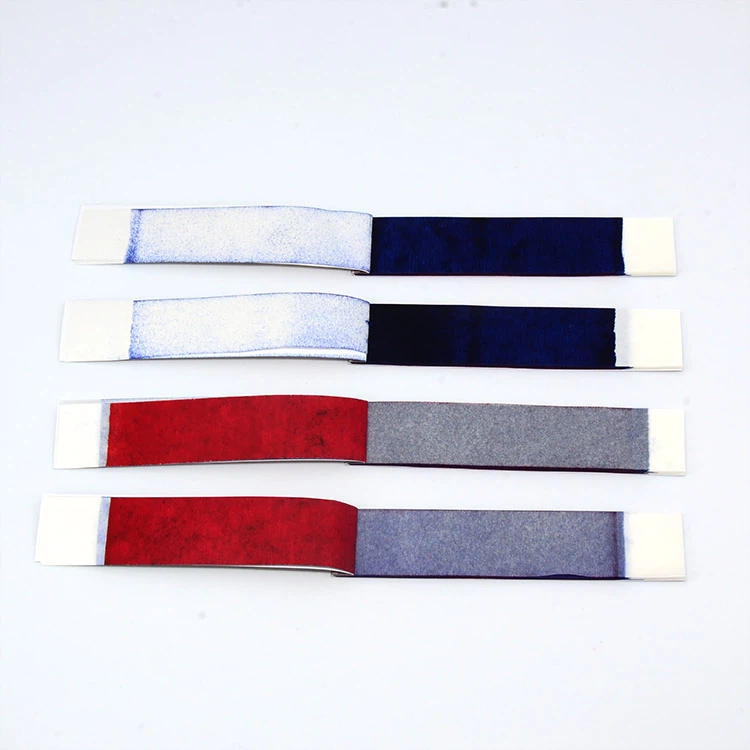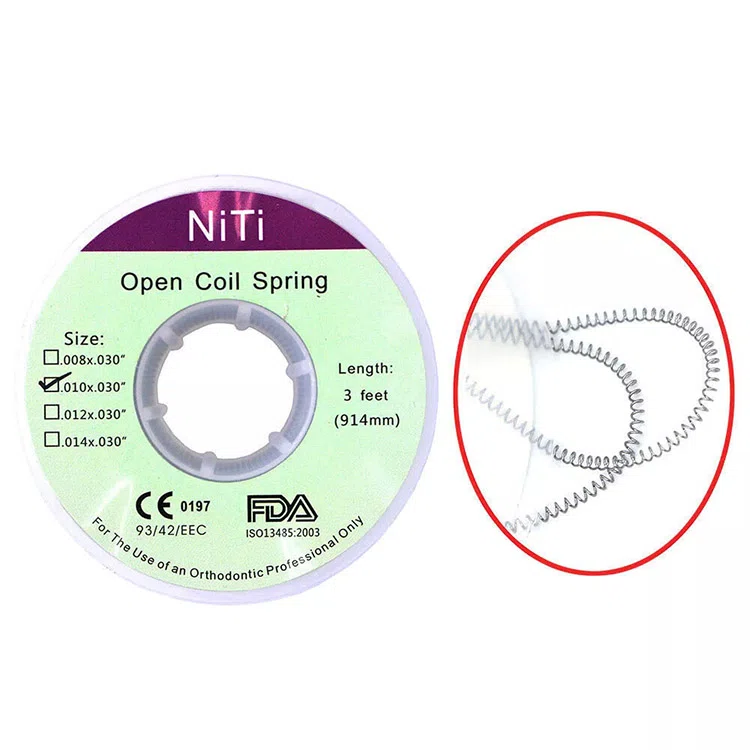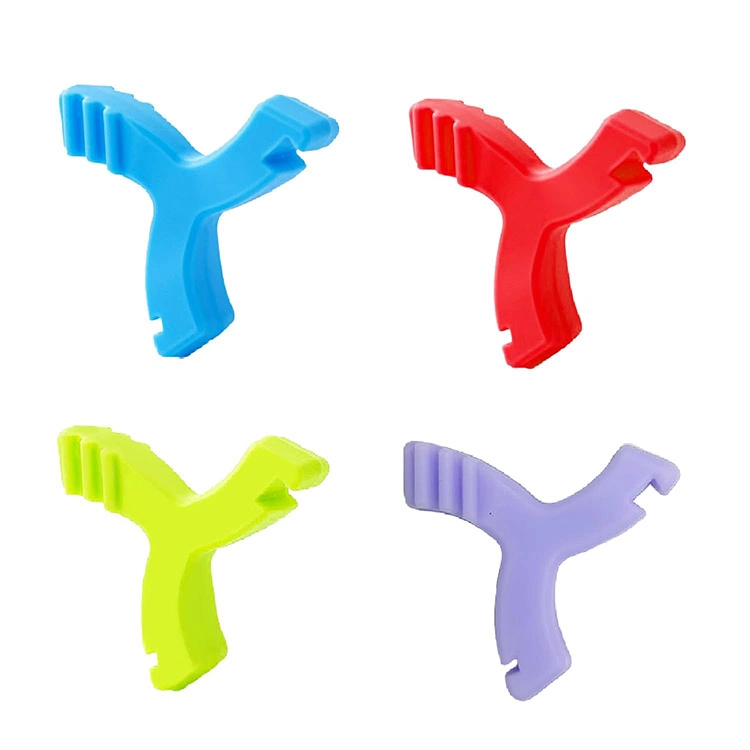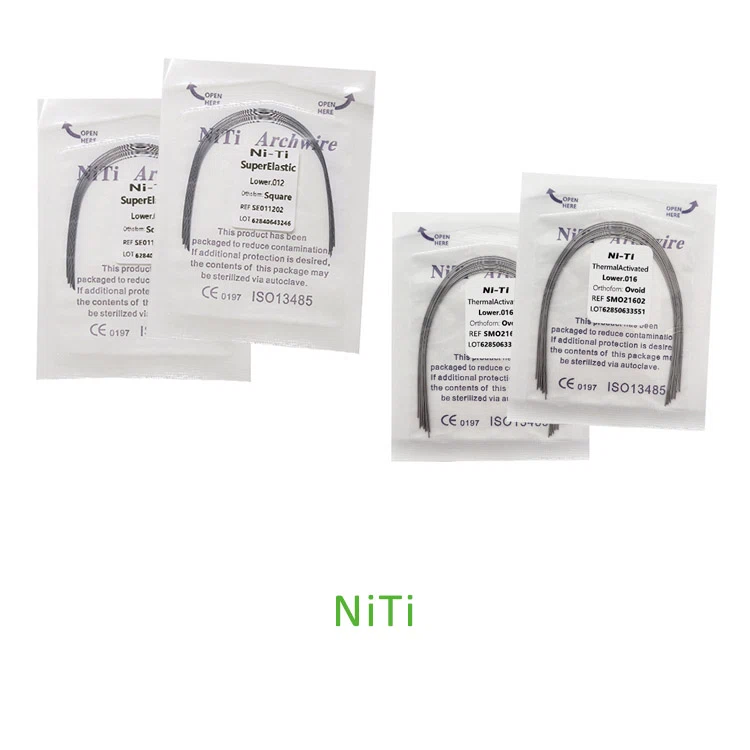
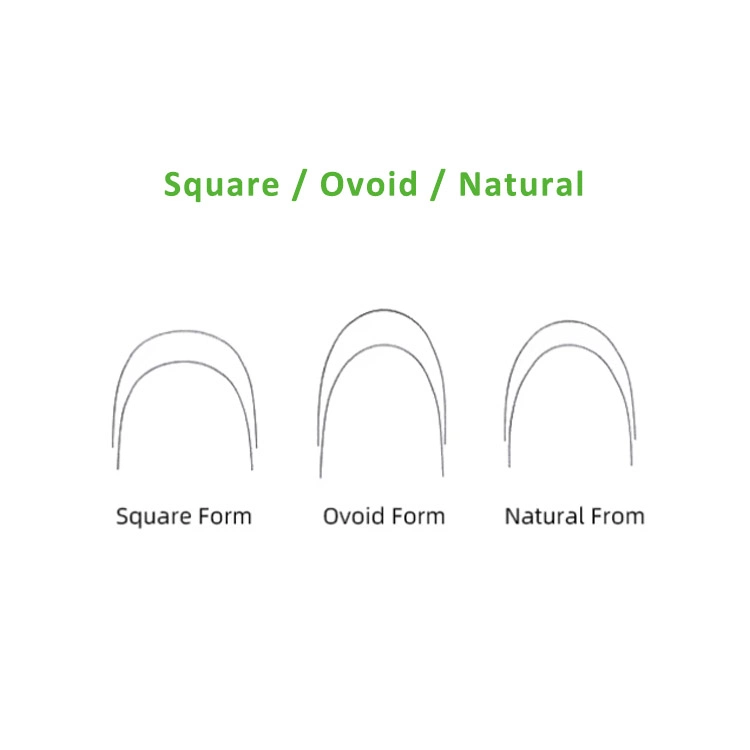
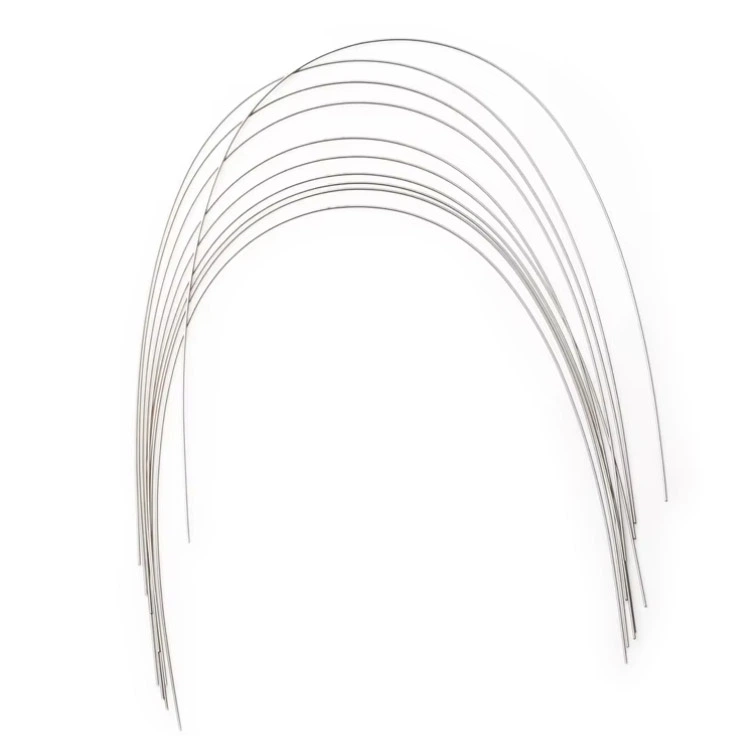
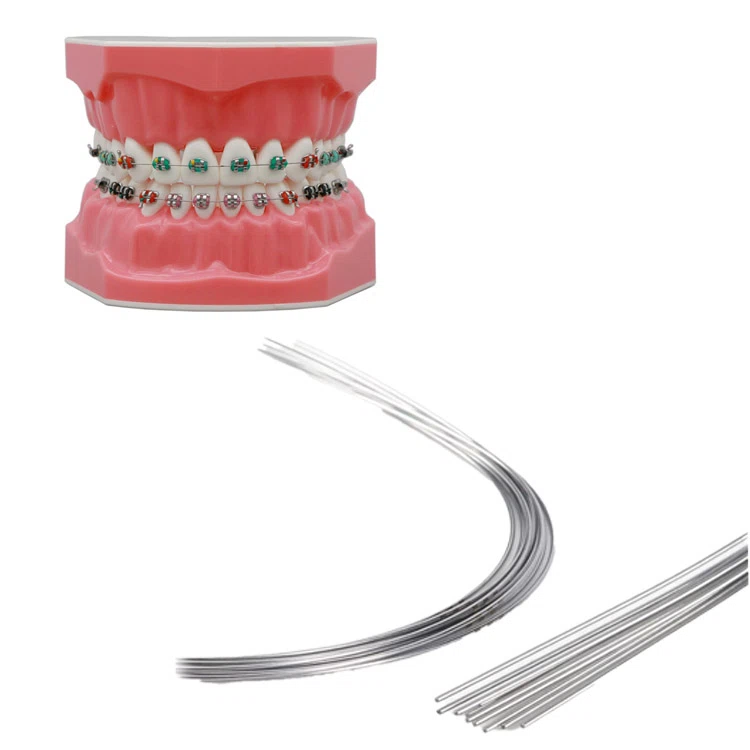
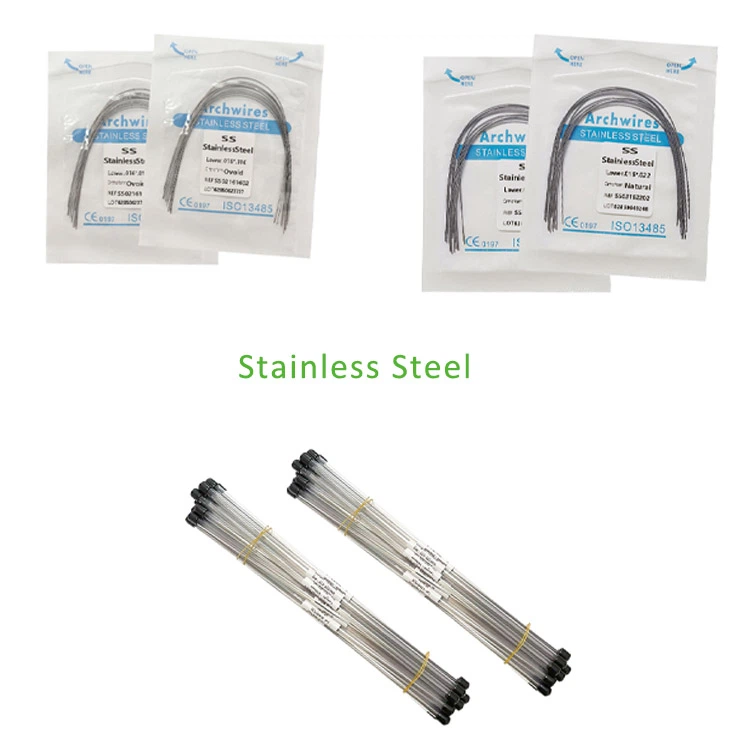
치열 교정 아치 와이어
- 니티 / 스테인레스 스틸 아치 와이어
- 패키지: 10PC/팩
- 우수한 스프링 백을 전시합니다
- 일관된 성능
- 마찰 감소를 위해 높은 연마
- 선택을위한 전체 시리즈 크기 및 양식 유형
치열 교정 아치 와이어는 치아에 압력을 가하여 지정된 위치로 이동하도록 유도합니다.. 일반적으로 버팀대와 함께 사용됩니다, 그리고 교정선의 장력과 방향을 조정함으로써, 치아와 물린 문제의 정렬을 효과적으로 향상시킬 수 있습니다..
치열 교정 아치 와이어는 치아의지지 지점에 가벼운 연속 장력을 적용합니다.. 이 치아는 미묘하게 움직입니다, 그러나 오랜 시간 동안 점차적으로, 원하는 위치로 전환. 치열 교정 치료의 결과는 치아의 정렬입니다., 대칭 치과 용 아치, 치아 사이의 얇은 감소, 얼굴 윤곽이 변경됩니다, 더 조화 롭고 미적으로 즐겁게 만듭니다. 치열 교정 아치 전선은 치아를 곧게 펴고 더 나은 물린 상태로 씹는 능력을 향상시킵니다..
치열 교정 아치 와이어 카테고리
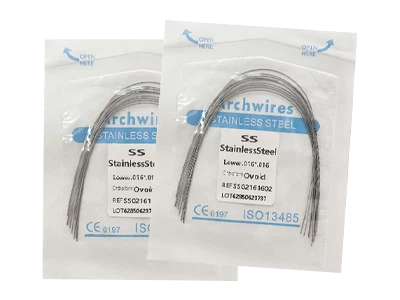
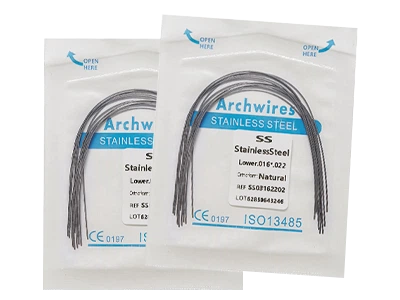
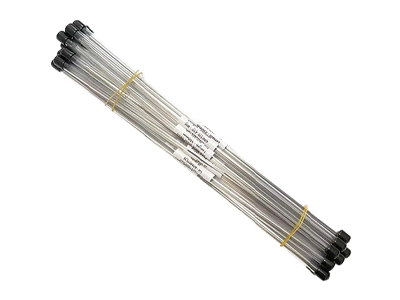
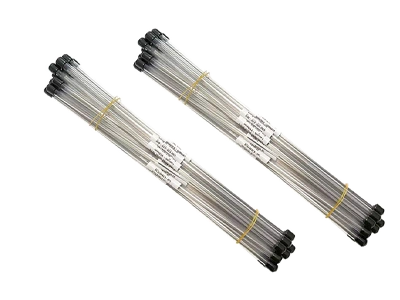
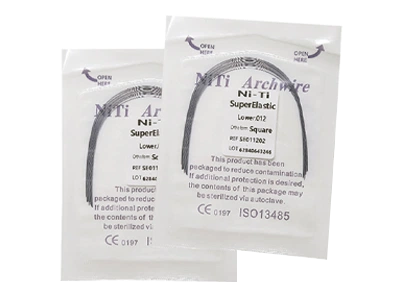
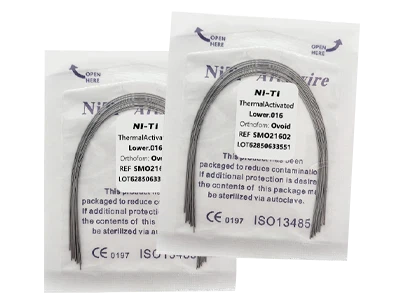
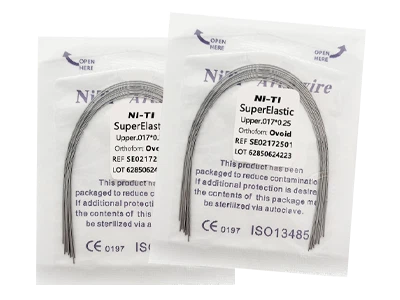
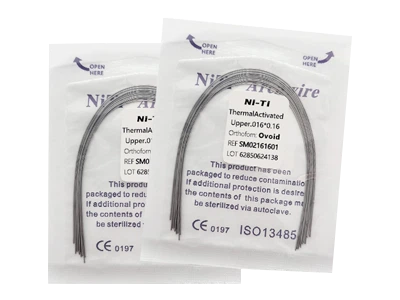
재료 구성을 기반으로합니다, 우리의 치열 교정 아치 와이어는 스테인레스 스틸 와이어와 니티 와이어로 분류 될 수 있습니다.. 스테인레스 스틸 아치 와이어는 저렴하고 내마모성과 부식성이 우수하며 구강 공동에서 오랫동안 안정성이 있습니다., 경도가 높습니다, 니티 와이어만큼 편안하지 않습니다, 탄성이 적습니다. Niti Arch Wire는 매우 탄력적이며 모양 메모리 기능이 있습니다.. 더 유연합니다, 치아 표면에 더 잘 맞도록 할 수 있습니다, 따라서 더 편안하지만 더 높은 가격으로.
관련 제품
교정용 아치 와이어의 정의
교정용 아치 와이어는 구강 교정 치료의 핵심 구성 요소입니다.. 특정한 기계적 성질을 지닌 미세한 선재입니다., 주로 아치와이어 브라켓 시스템을 통해 교정력을 전달하는 방식, 치아의 느린 움직임을 촉진하고 교합관계를 조정합니다.. 치료과정 전반에 걸쳐, 교정용 와이어는 두 가지 역할을 모두 수행합니다. “힘 지휘자” 그리고 “치아 가이드”, 그리고 그 성능은 교정 결과에 직접적인 영향을 미칩니다, 치료 기간, 그리고 환자의 편안함.
교정용 아치 와이어는 일반적으로 금속 합금으로 만들어집니다., 철로 구성된 스테인레스 스틸 와이어와 같은, 크롬, 그리고 니켈; 니켈과 티타늄으로 만든 니켈-티타늄 합금 와이어; 몰리브덴 및 니오븀과 같은 원소와 합금된 티타늄 베이스를 특징으로 하는 베타-티타늄 합금 와이어.
교정용 아치와이어의 원리
교정용 아치와이어는 브라켓과의 연결을 통해 의사가 미리 설정한 교정력을 대상 치아에 정밀하게 전달한다. (치아 표면에 부착된 금속 또는 세라믹 베이스, 치아교정 치료를 위한 액세서리입니다), 압축력을 발생시켜 치조골 내에서 치아의 느린 움직임을 촉진합니다.. 궁극적인 목표는 치아교정이라는 치료목적을 달성하는 것입니다., 교합 관계 조정 및 안면 형태 개선.
치과교정용 아치와이어의 재료분류 및 특징
1. 스테인레스 스틸 와이어
- 구성: 주로 철 등의 금속으로 구성, 크롬, 그리고 니켈 (크롬 함량: 17%-19%, 니켈 함량: 8%-10%), 일부 프로 제품은 성능을 최적화하기 위해 몰리브덴 및 티타늄과 같은 요소를 추가합니다..
- 특징: 고강도, 큰 강성, 강한 내식성, 습한 구강 환경에서 녹이 덜 발생합니다.. 적당한 탄성률을 가지고 있습니다., 안정적인 치아교정력을 제공할 수 있고 가공성이 좋은 제품입니다.. 치료 요구 사항에 따라 다양한 형태의 아치 와이어로 구부릴 수 있습니다..
- 적용단계: 교정치료 중기 및 후기 단계에서 많이 사용됩니다., 치아배열 후 미세조정, 교합관계 교정 등, 특히 교정 효율성에 대한 요구 사항이 높은 경우에 적합합니다..
2. 니켈-티타늄 합금선
- 구성: 니켈로 이루어진 형상기억합금 (50%-55%) 그리고 티타늄 (45%-50%), 결정 구조에 따라 오스테나이트 니켈-티타늄 와이어와 마르텐사이트 니켈-티타늄 와이어로 분류됩니다..
- 특징: 형상기억효과와 초탄력성을 가지고 있습니다., 체온에서 미리 설정된 모양으로 돌아갈 수 있습니다., 부드럽고 안정적인 교정력을 지속적으로 제공하여. 탄성률이 낮습니다., 치아에 자극을 덜 주고, 환자의 편안함을 향상시킵니다..
- 적용단계: 주로 치료 초기에 사용, 정렬된 치아 및 열린 교합과 같은, 특히 치아의 밀집과 비틀림이 심한 경우에 적합합니다., 환자의 불편함을 효과적으로 줄여줍니다..
3. 티타늄 합금 와이어 (β-티타늄 합금선)
- 구성: 몰리브덴과 같은 원소를 첨가하여 형성된 합금, 니오브, 지르코늄에서 티타늄을 기본 재료로 (Ti-Mo-Nb-Zr 합금 등).
- 특징: 스테인레스 스틸 와이어의 높은 강도와 니켈-티타늄 합금 와이어의 우수한 탄성을 결합한 제품입니다., 탄성 계수는 둘 사이에 있습니다.. 생체적합성이 좋고 니켈이 함유되어 있지 않습니다., 니켈에 알레르기가 있는 환자에게 적합합니다.. 내식성이 강하고 가공 성능이 좋습니다., 복잡한 활 모양의 와이어 모양으로 만들 수 있습니다..
- 적용단계: 교정치료의 중간 단계에 적합합니다., 특히 정렬된 치아에서 미세 조정으로의 전환 기간 동안. 충분한 교정력을 제공할 수 있을 뿐만 아니라 치아 이동의 안정성도 확보할 수 있습니다..
교정용 아치와이어 교정력의 유형
교정용 아치와이어에 의해 발생되는 힘의 성질에 따라, 그들은 주로 다음과 같은 유형으로 분류됩니다:
- 탄성력: 교정용 아치 와이어가 탄성 변형을 겪는 경우, 탄성력이 발생한다, 치아를 움직이는 주요 원동력인. 니켈-티타늄 합금 와이어는 가장 부드럽습니다., 가장 안정적이고 오래 지속되는 탄성력, 스테인레스 스틸 와이어는 탄성력이 더 강하지만 지속 시간은 상대적으로 짧습니다..
- 마찰: 교정용 와이어와 브라켓 사이의 마찰은 치아 이동 속도에 큰 영향을 미칩니다.. 치아교정 단계에서, 움직임의 효율성을 높이기 위해서는 마찰을 최대한 최소화하는 것이 필요합니다.. 미세 조정 단계에서, 적절한 마찰은 치아의 안정적인 위치를 유지하는 데 도움이 됩니다..
- 토크 힘: 교정용 아치 와이어를 구부려 발생하는 토크 힘으로 치아의 입술과 혀의 기울기를 제어할 수 있습니다., 교합관계 및 얼굴형 개선. 티타늄 합금 와이어는 토크 힘 안정성이 우수하며 임상 실습에서 일반적으로 사용되는 토크 제어 재료입니다..
치열궁 와이어의 치아교정력에 영향을 미치는 요인
- 재료 특성: 탄성 계수, 다양한 재료의 항복 강도 및 탄성 한계는 다양합니다., 이는 교정력의 크기와 지속 기간을 직접적으로 결정합니다.. 예를 들어, 니켈-티타늄 합금 와이어는 탄성률이 낮습니다., 그 결과 상대적으로 교정력은 작지만 지속 시간은 길어집니다.. 스테인레스 스틸 와이어는 높은 탄성률을 가지고 있습니다., 상대적으로 큰 교정력을 제공하지만 지속시간은 짧습니다..
- 교정용 와이어의 직경: 와이어의 직경은 치아교정력에 영향을 미치는 중요한 요소입니다.. 직경이 클수록, 강도가 높을수록 교정력도 커집니다.. 직경이 작을수록, 탄성이 좋을수록 교정력이 작아집니다.. 일반적으로 사용되는 직경 사양에는 다음이 포함됩니다. 0.012 신장, 0.014 신장, 0.016 신장, 0.018 신장, 0.020 신장, 등.
- 아치와이어의 모양: 아치와이어의 모양 (원형과 같은, 정사각형, 또는 직사각형) 브래킷과의 접촉 면적과 마찰력에 영향을 미칩니다., 교정력의 전달에 영향을 미치게 됩니다.. 원형 와이어는 접촉 면적이 작고 마찰이 적습니다., 치아배열 단계에 적합하도록 제작. 정사각형 및 직사각형 와이어는 접촉 면적이 넓습니다., 토크 힘을 보다 효과적으로 전달할 수 있으며 미세 조정 단계에 적합합니다..
교정용 아치와이어 사용 시 주의사항
- 구강 위생 유지: 교정용 아치와이어를 브라켓에 연결한 후, 음식물 찌꺼기가 쌓이기 쉽다. 제때 청소하지 않으면, 치태가 쌓이는 원인이 될 수 있습니다, 충치, 치은염 등의 문제를 일으킬 수 있습니다..
- 딱딱한 물건을 씹는 것을 피하세요: 교정용 와이어의 강도와 내마모성은 제한적입니다.. 딱딱한 물건을 씹는다 (견과류 같은, 뼈, 딱딱한 사탕, 얼음 조각, 등.) 전선이 파손될 수 있습니다., 변형되거나 브래킷이 떨어질 수 있습니다., 치료 진행에 영향을 미치는.
- 정기적인 후속 방문: 환자는 의사의 요구에 따라 정기적인 후속 방문을 받아야 합니다. (보통 모든 4 에게 8 주), 의사가 직경을 조절할 수 있도록, 치아의 움직임에 따른 치열궁 와이어의 모양이나 장력.
- 구강 불편 증상에 주의하세요: 교정용 아치와이어를 처음 착용하거나 조정한 후, 환자는 치통이나 구강점막 마모 등의 불편함을 경험할 수 있습니다., 일반적으로 점차적으로 가라 앉습니다. 1 에게 2 주. 불편함이 지속되거나 악화되는 경우, 검사를 위해 즉시 의사의 진료를 받아야 합니다.
FAQ
교정용 아치와이어 교체 빈도에 대한 정해진 기준은 없습니다.. 주로 치료주기에 따라 다릅니다., 치아이동속도와 치료단계의 목표. 대개, 치아교정 치료 전반에 걸쳐 (1.5 에게 3 연령), 교정 와이어가 교체됩니다 4 에게 8 타임스.
부러진 부분은 보관하고 치과의사에게 연락하세요. 그는 교정용 아치 와이어를 재조정하거나 교체할 것입니다. 우발적인 섭취의 위험을 피하기 위해 스스로 취급하지 마십시오..
치간 브러시로 아치와이어와 브라켓 주변을 부드럽게 닦아줍니다., 그리고 물 치실을 사용하여 음식물 찌꺼기를 제거하세요..
예. 치아교정 치료가 끝난 후, 치과의사가 모든 치열궁 와이어를 제거할 것입니다., 마지막 후속 방문 시 입에서 나온 브래킷 및 기타 구성 요소. 제거 후, 그는 치아 표면을 깨끗이 닦고 닦을 것입니다. 치아의 안정적인 위치를 유지하고 튀어오르는 것을 방지하기 위해 유지장치를 착용하는 것이 좋습니다..
핵심 선택 원칙 (생체 적합성과 일치하는 치료 목표) 일관성이 있다, 그러나 어린이와 성인의 치아 및 치주 상태가 다르기 때문에, 세부적인 차이가 있어요.

